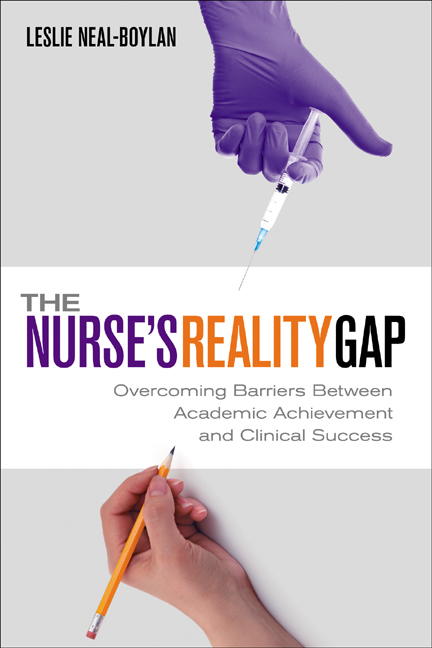
Everything in nursing education must have as its primary objective a relevant application to real world clinical practice. Nursing is a practice based profession and it is imperative that nurse educators do not lose sight of this in the midst of a busy school year.
As a newer nurse educator who has been in clinical practice for over 30 years, I have observed that it is all too easy for nurse educators to lose sight of this reality by what I see emphasized in the curriculum as well as at nurse educator conferences.
What Nursing Education is NOT
In order to truly transform nursing education it is important to step back and remember what should NOT be an emphasis but can creep in if educators are not careful. These attitudes can all too easily sneak in and dictate the curriculum at the expense of what is truly most important.
Nursing education is NOT about textbook content
Though textbooks are getting larger, mastery of this broad body of knowledge is not possible. Students cannot know it all and it is imperative to decrease this broad body of knowledge to what is truly most important and relevant for bedside application and practice.
Students must be able to use knowledge, not just know it well enough to pass an exam.
It is NOT about the NCLEX®
Though this licensure examination is a crucial benchmark for a student’s ability to be safe in practice, passing the NCLEX® in and of itself must not be the primary emphasis of nursing education.
Unfortunately this test has also become a benchmark for gauging the success of nursing education programs and the success rate of students is published and compared to standardized norms for other programs and the board of nursing to review.
When NCLEX® pass rates dropped significantly a couple years ago, there was much anxiety and urgency to correct this, but I did not see the same urgency on the need to transform nursing education to better prepare students for clinical practice.
I see this overemphasis at nurse educator conferences where I have observed many sessions titled on various themes of “NCLEX® success” but do not recall a similar emphasis on strengthening each student’s ability to transition to real world clinical practice.
What Nursing Education Needs to Be About
Nursing education must recapture as its primary emphasis the need to prepare students for real-world clinical practice, and the realities that they will encounter in a setting that is very different from what they have experienced as a nursing student.
Students will soon experience reality shock after they graduate when they have several patients, with the need to priority set, manage these demands, and communicate with primary care providers in the middle of the night. This is the reality that students will soon experience that nursing education needs to prepare them for.
These observations are not unique to me. I recently read the book The Nurse’s Reality Gap: Overcoming Barriers Between Academic Achievement and Clinical Success by Leslie Neal-Boylan, PhD, CRRN, APRN-BC, FNP and published by Sigma Theta Tau International that is a must read for every nurse educator that validates these same concerns.
Premise of Reality Gap
Neal-Boylan sent an online survey to recently graduated nurses in AD, BSN, and masters programs to solicit their feedback, and reflections on how they felt about nursing and the preparation they received from their programs and how well their school prepared them for real-world clinical practice.
What follows are the themes she derived from her survey.
Student Insights
The themes of the recommendations from these new nurses form the basis of the book. The following are concerns that new graduate nurses saw as weaknesses in their preparation as a professional nurse in nursing education:
- Need for more clinical hours while in nursing school
- Need for more realistic patient loads while in nursing school. Having 1-2 patients consistently did not prepare them to transition successfully
- No practical content on priority setting, time management and communicating with primary care providers with larger patient loads
- Did not feel prepared to delegate, multitask and how to navigate the political culture of healthcare
Author Insights
Neal-Boylan is an associate dean and professor at Quinnipiac University in Hamden, Connecticut and has 30 years of direct clinical experience as a family NP and 15 years in nursing education. She has authored almost 100 peer-reviewed publications including seven books.
She offers some bold insights and reflections that must be seriously considered by every nurse educator:
- Value the role of bedside nursing. Many students at the BSN level shared that it was communicated by faculty that one must move away from bedside nursing as soon as possible and pursue other leadership opportunities and experiences in nursing. This attitude contributes to a lack of unity within the nursing profession between those who provide direct patient care and those who have no contact. Those who remain in patient care tend to be looked down upon by nurses who have advanced practice degrees. We must recognize that we are all one nurse!
- Hold your students to high standards. Resist The temptation to “spoon feed” students. Though nursing is more than a job but is a profession and even a calling for some, educators must encourage those characteristics foundational to nursing practice. Having a passion for helping and serving others is essential to be a competent caregiver and advocate. Students must be encouraged to be inquisitive, lifelong learners, and maintain a high standard of professional behaviors in all they do.
- Nurse educators should be current in clinical practice. Nursing is a practice based profession and the education practice gap remains a current chasm in nursing. This chasm must not be ignored, but efforts be undertaken to bridge it. One important step to bridge this current gap is that those who teach nursing students should be current in their own clinical practice at some level (casual or part-time). Taking students to clinical settings is not enough.
In Closing
After reading this book, it was refreshing to see the obvious passion that Neal-Boylan has to improve nursing education and her willingness to not only share her data, but reflect
It is important to listen to the voices of our students, past and present and be sensitive to what can be done to improve what we are doing as educators to not only teach well, but more importantly strengthen your program so that students are better prepared for real-world clinical practice.
I will begin a series of blogs on this important topic of strengthening student transition to clinical practice and look forward to sharing best practice recommendations to bring needed change to not only transform nursing education but more importantly, better prepare students for professional practice.
What do you think?
What are the current struggles in your program that need to changed in order to better prepare your students for clinical practice?
Comment below and let the conversation begin!
References
Neal-Boylan, L. (2013). The nurse’s reality gap. Indianapolis, IN: Sigma Theta Tau International.
Keith Rischer – PhD, RN, CEN
As a nurse with over 35 years of experience who remained in practice as an educator, I’ve witnessed the gap between how nursing is taught and how it is practiced, and I decided to do something about it! Read more…
The Ultimate Solution to Develop Clinical Judgment Skills
KeithRN’s Think Like a Nurse Membership
Access exclusive active learning resources for faculty and students, including KeithRN Case Studies, making it your go-to resource.



